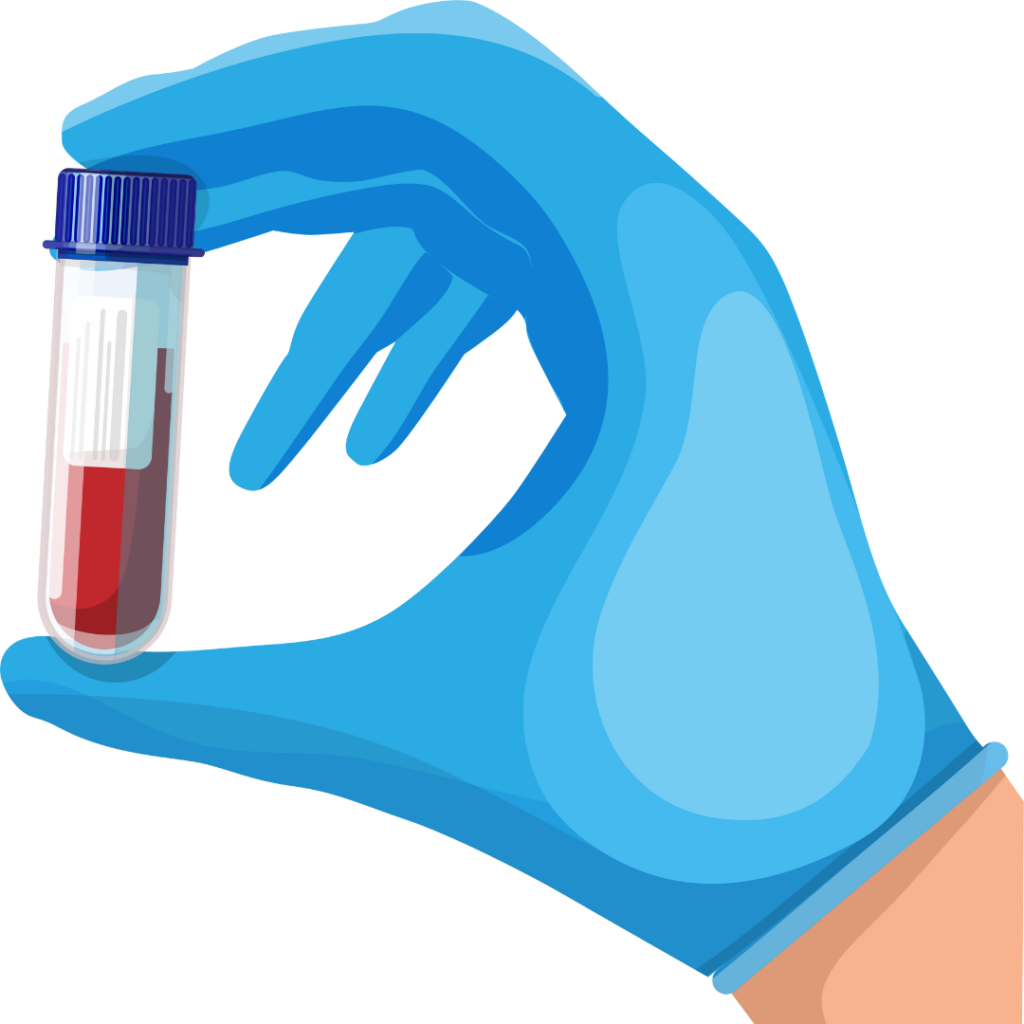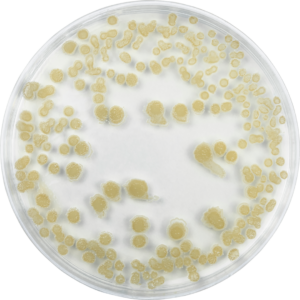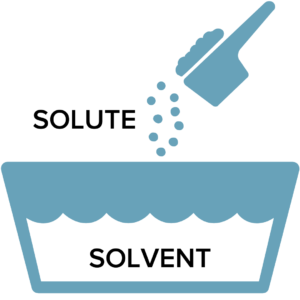Ratios, Proportions, and Dilutions
What is a ratio? What is a proportion? To start with, we are going to look at the definitions of these two different, yet related, concepts and then we will work through problems to learn the differences between them. Then we will use the ratios and proportions in situations we may encounter in life sciences.
A ratio is a comparison of two quantities. For example, if we have a mixture of cinnamon and sugar that contains twice as much sugar as cinnamon, we say that the sugar to cinnamon ratio is 2 to 1. (We could also say that the cinnamon to sugar ratio is 1 to 2.)
A proportion is a specific type of ratio, the ratio of a part to a whole. We usually express proportions as fractions. For example, our aforementioned sugar and cinnamon mixture would be 2/3 sugar and 1/3 cinnamon.
The following examples are going to show us how ratios and proportions work together to allow us to solve problems in life sciences.
Example 1
Suppose we have a plot of sunflower plants. There are 9 sunflower plants in this small plot, and unfortunately, leafy spurge, an invasive weed, has invaded our plot. We count 3 leafy spurge plants.
Question: What is the ratio of sunflowers to leafy spurge in this plot?
Answer: The ratio is 9 sunflowers to 3 leafy spurge, or 9 TO 3. This can also be written as 9 sunflowers : 3 leafy spurge or 9 : 3.
In fraction form, this is written as:
Question: What is the proportion of leafy spurge in the plot?
Answer: Since the total number of plants in the plot is 12, the proportion of leafy spurge is , which simplifies to .

Example 2
Suppose we have a sample tube of human blood and we know that there are blood cells in mL of blood.
Question: How many blood cells would we expect to find in a 10-mL sample of blood?
Approach: This is a problem that can be solved using ratios that are set equal to each other. Let's start with what we know and use for the unknown value.
What we know: We have a ratio of:
What we want to know:
Solve:
Let's first set the ratios equal to each other::
Then cross multiply:
Now we divide both sides by 0.01 to isolate for :

Quite often when conducting lab science, we begin with a stock solution and make other dilute solutions from the stock. In the following example, we are going to discuss how to perform a serial dilution. This is where we make a series of dilutions where the first dilution is made from the stock solution and then each subsequent dilution is made from the prior dilution.
Microbiologists often do this to create dilutions of a sample containing microorganisms in order to grow them on a Petri plate and find the number of microorganisms in the original sample. One bacterial colony growing on solid medium is called a colony forming unit (CFU), which is equitable to one cell in the original culture. We can therefore work backwards from the number of CFUs on a plate of a specific dilution ( for example) to the number of bacteria in the original sample.
Next we will look at a question dealing with a similar situation.

Example 3
There was a recent foodborne illness outbreak and our lab received a sample to determine what microorganism was the culprit. We performed serial dilutions from the original sample to 10^-5 and we inoculated each plate with 100 microliters (1.0 x 10^-4 L). We found the following numbers of CFUs per Petri plate for each dilution:
too many to count
too many to count
211
20
0
Question: How many CFU/mL are there in the original sample?
Approach: We will use proportions to solve for CFUs/mL and we will use the plate with 211 CFUs, since we obtain the most accurate results by using a plate with between 30 and 300 CFUs.
Solve: Each plate was created from a 0.1-mL (100 microliter) sample, so we can write:
Now we cross multiply and solve:
Finally, write the answer in scientific notation:
Working with Solutions
In life sciences, you will deal with solutions of various concentrations. Some will be written in the terms weight to volume, others volume to volume, etc. To review terminology, the substance being dissolved is called the solute and the liquid into which it dissolves is called the solvent.
Also remember that concentration and amount are not interchangeable terms. Amount is how much solute is present in grams, mL, etc. Concentration is a ratio in which amount is in the numerator and volume is the denominator: concentration = amount / volume.
In the next example, we will talk about proportions and percentages as they relate to solutions.

Example 4
You have 2.5 L of a 5{9908f2c9ebc0a4299df98c4fc5aecffecd9da31aa7e644f64ccda5ab2923917a} HCl (hydrochloride) solution in water. In this solution, HCl is the solute and water is the solvent.
Question: How many mL of the solution is HCl?
Approach: Set up the ratios in fraction form has we have done in previous examples. Percent means per 100, so our 5{9908f2c9ebc0a4299df98c4fc5aecffecd9da31aa7e644f64ccda5ab2923917a} HCl solution becomes 5 over 100.
Cross multiply and solve for :
Now we need to convert L to mL. Remember that there are 1000 mL in 1 L.
The L units cancel out.
There are 125 mL of HCl in 2.5L of a 5{9908f2c9ebc0a4299df98c4fc5aecffecd9da31aa7e644f64ccda5ab2923917a} HCl solution.
When we have a stock solution that we must dilute, proportions and ratios are the key to solving this type of problem. An equation that is helpful is C1V1 = C2V2. In this equation, C stands for concentration and V stands for volume. In chemistry, you might write M1V1 = M2V2 where M stands for molarity.
Written as a proportion, this equation becomes:
Example 5
You have a stock solution of purified protein at a concentration of 4 mg/mL.
You are going to be plotting a standard curve by using a spectrophotometer to measure the light absorbed by each of several samples of known protein concentrations. To do this, we will use the stock solution to create the required dilutions. The goal of this problem is to use the equation C1V1=C2V2 to help you determine the amount of stock solution needed to create 1-mL samples of the desired concentrations.
C1 stands for the concentration of the stock solution, which is 4 mg/mL.
V1 stands for the volume of the stock solution needed to make the required sample (what we are solving for).
C2 stands for the protein concentration of the sample we want to make, which is 0.4 mg/mL.
V2 stands for the total volume of the sample we want to make, which is 1 mL (this will include the protein stock solution we add plus the amount of water needed to reach the total volume).
Now divide each side by 4 to isolate for .
Note: We should always check units before solving. For more on unit conversions, visit the Unit Conversions Module.
Now that we know how much of our stock solution we need (V1), we next need to determine how much water to add to V1 in order to create a total volume of 1 mL (V2):
OR
You try the next one!
Question: How much stock solution will you need to make 1 mL of a 0.6 mg/mL solution? How much water will you need to add to the stock solution to make 0.6mg/mL?
Answer: V1 = 0.15 mL and the amount of water needed is 0.85 mL.
References
- Differences Between Proportions & Ratios
Kero, M, author. Demand Media: eHow; 2012 Feb 23 [cited 2012 June 27]; 1.75 min., sound, color. Available from http://www.ehow.com/video_12222126_differences-between-proportions-ratios.html
- Tracy Joint Union High School. Advanced Biology and Biotechnology [Internet]. Tracy (CA): c2001. Notes on basic laboratory techniques; 26 June 2012 [cited 26 June 2012]; [about 3 p.]. Available from: http://www.jkirkbrown.com/pfds/biotechmath.pdf
- Aho, E. Sample Dilution Problems [in class activity]. Moorhead: Concordia College; 2011 Sept.
- Tracy Joint Union High School. [about 3 p.].
